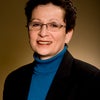I had an opportunity recently to visit the Women of Abstract Expressionism exhibit at the Denver Art Museum. As the exhibit described, women were welcomed into the art world in San Francisco in the 1930s and 1940s, but not in the world of art in New York City in that time frame. Yet, these women, many of whom are unknown to the general public, were passionate about their art and they persevered. Today, we know their names and appreciate their art. Let’s learn about a few of these talented and determined women. Match the woman with her accomplishment:
____ 1. Today, a revered artist, she decided to become a professional artist in the 1920s when she was 13 years old.
____ 2. Regarded as one of the finest art teachers of the twentieth century, she not only painted but also served as an art critic.
____ 3. The first African-American woman to have a solo exhibit at the Whitney Museum.
____ 4. Developed the soak-stain technique that gave rise to the movement called “Color Field Painting.”
- Alma Thomas
- Lee Krasner
- Elaine de Kooning
- Helen Frankenthaler
The first African-American woman to have a solo exhibit at the Whitney Museum, Alma Thomas was the first graduate of Howard University’s art department in 1924. Her solo exhibit occurred when she was 80 years old. Today, one of her paintings hangs in the White House dining room. The Smithsonian Institution had a major exhibition of her works three years after her death and another retrospective of her work began in February 2016. After a career as an educator, Thomas retired to pursue her art full time. Her work features short brush strokes in brilliant colors many in vertical stripes or circular compositions. Thomas said she preferred to concentrate on beauty and happiness in her paintings.
One of the few women artists to have a retrospective at the Museum of Modern Art, Lee Krasner decided to become a professional artist by the age of 13, a most unusual decision for a woman in the early 1920s. She was able to study art at the only public high school in New York City that allowed women in the art classes. Already showing an independent streak and an interest in abstract art, Krasner was fortunate to be hired as an artist through the Works Progress Administration/Federal Art Project – part of the New Deal programs implemented to mitigate the impacts of the Great Depression. During the 1930s, she used an “all-over” style, covering her canvases with abstract repetitive designs, often with floral elements. Many of her early works do not survive, as she cut them up and used pieces of them as collages in her later works. Her work was revived in the 1960s and 1970s along with the advent of the women’s movement and today she is a revered artist. After her death and due to her philanthropy, the Pollock-Krasner Foundation was established to assist in the development of artists.
An art critic, painter, and teacher Elaine de Kooning produced much of her abstract work during the 1950s. Regarded today as one of the finest teachers of the twentieth century, one of her most famous paintings is of President John F. Kennedy that hangs in the National Portrait Gallery in Washington, DC. Like Krasner, de Kooning benefited from the WPA/FAP New Deal funds by studying at the Leonardo da Vinci Art School in New York City, whose teachers were funded by the WPA/FAP. In 1954, she held her first solo exhibit at the Stable Gallery. In 1957, she began teaching in New Mexico. Her style of painting evolved over the years influenced by her travels.
The inventor of the soak-stain technique in which turpentine-thinned oil paint is poured onto the canvas and creates color washes, abstract painter Helen Frankenthaler gave rise to a movement called “Color Field painting.” Unlike many other abstract painters, Frankenthaler saw natural landscapes as an inspiration. Her “Mountains and Sea”, contained in the collection of the National Gallery of Art, is considered her landmark piece. A young woman whose interest in art was fostered by her parents, she decided to be a professional artist at age 16. Frankenthaler made art for the rest of her life including clay and steel sculpture and designed costumes for England’s Royal Ballet.
Learn about more she-roes and celebrate amazing women. These amazing painters are among the more than 850 women profiled in the book Her Story: A Timeline of the Women Who Changed America. I am proud to tell their stories and help write them back into history.
(Answers 1-B, 2-C, 3-A, 4-D)
